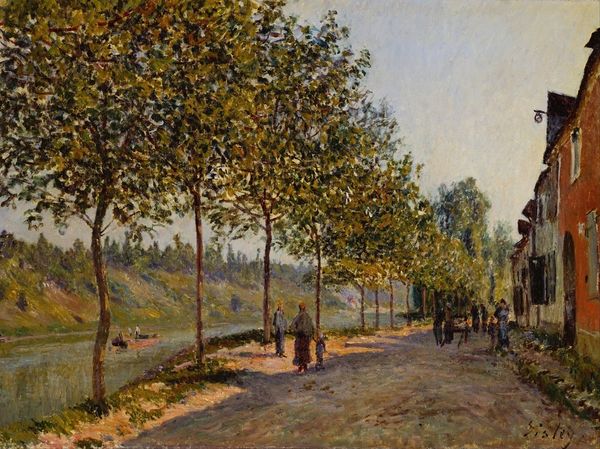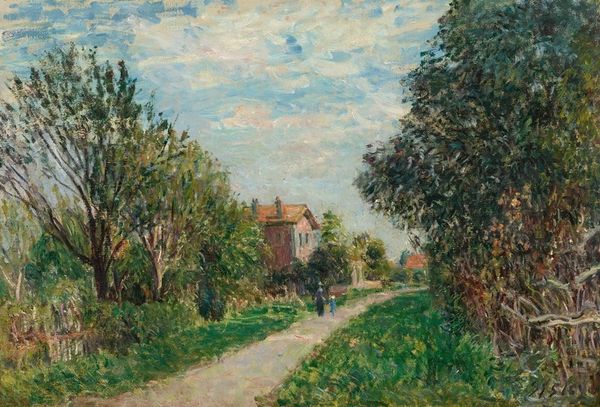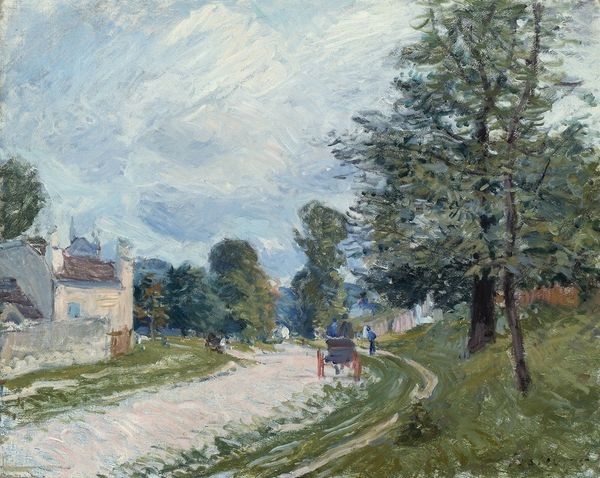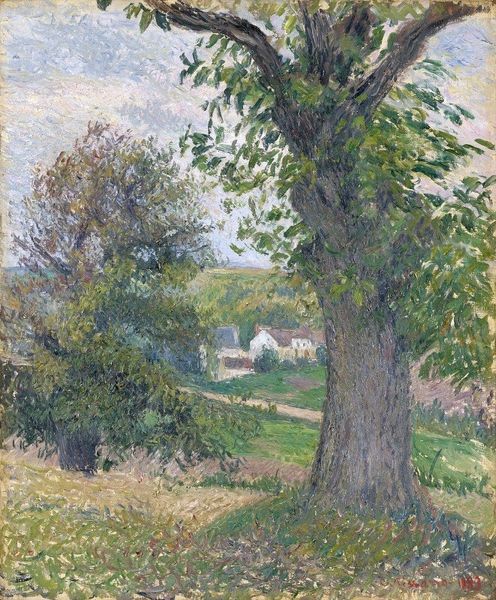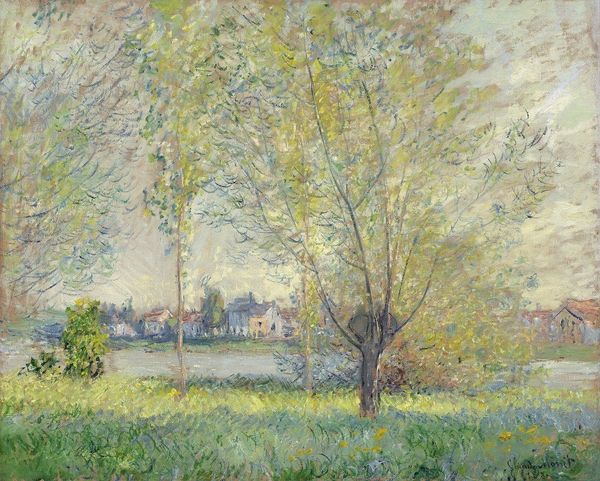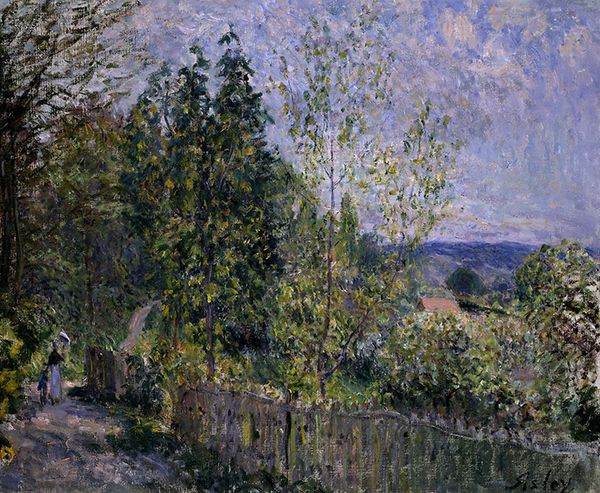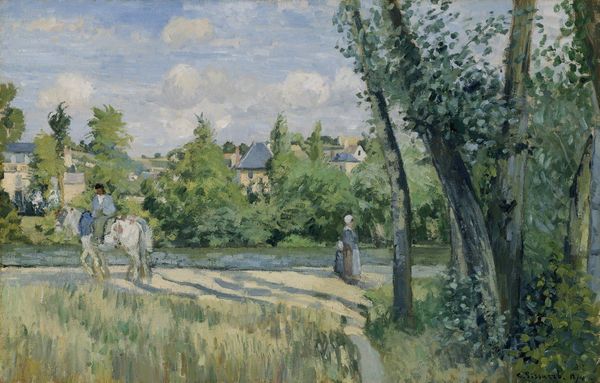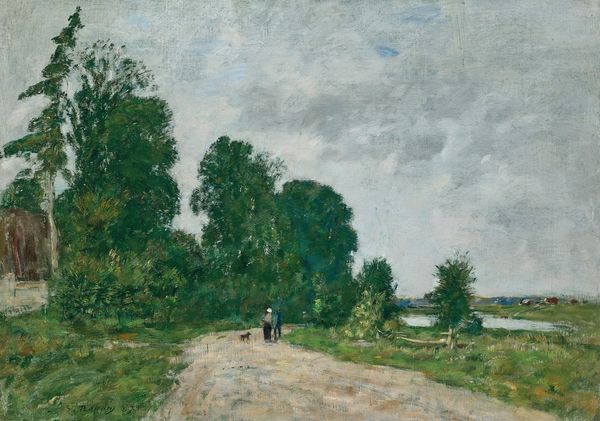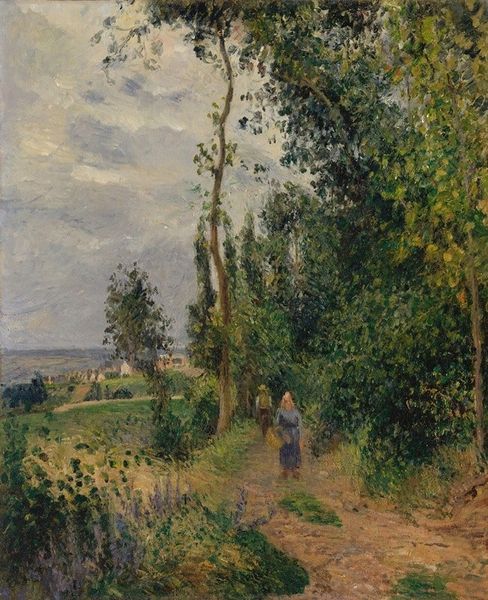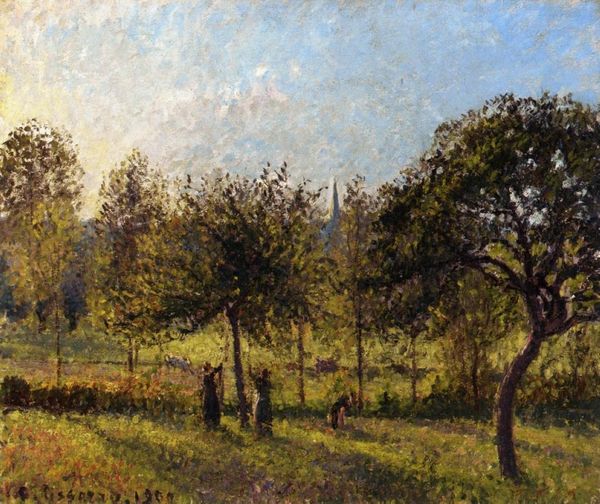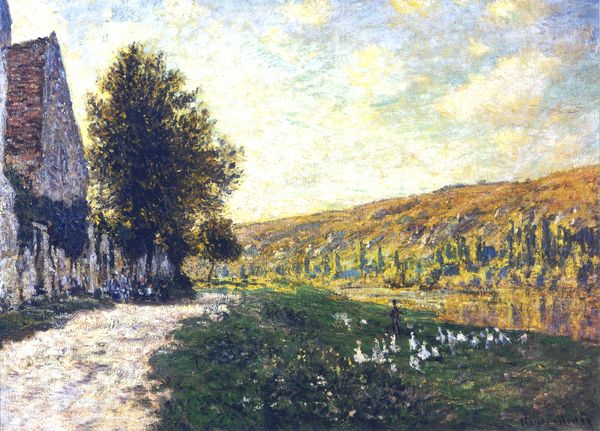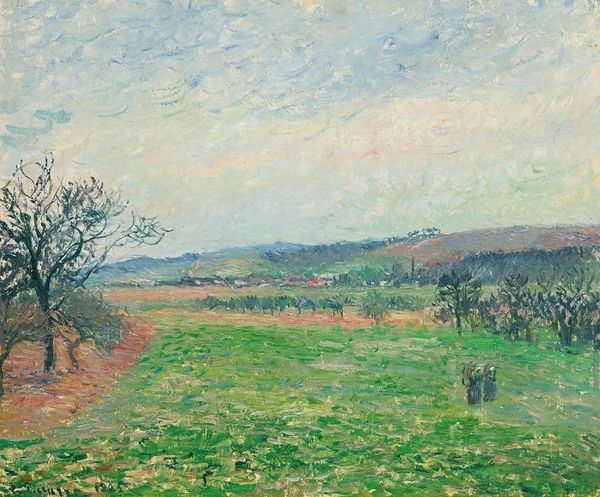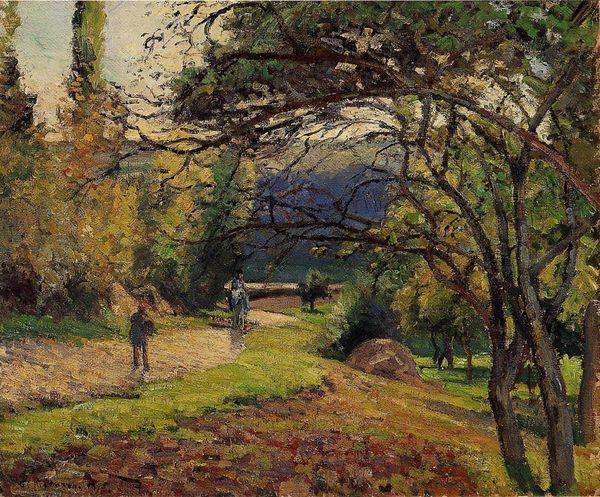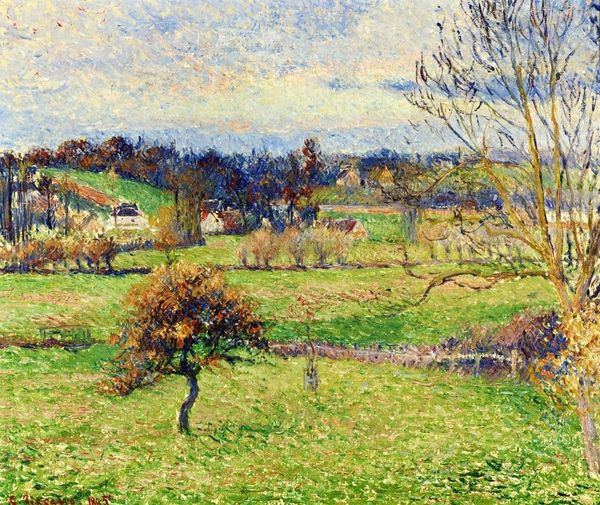
plein-air, oil-paint, pencil
#
impressionism
#
plein-air
#
oil-paint
#
landscape
#
possibly oil pastel
#
oil painting
#
road
#
pencil
Copyright: Public domain
Editor: Alfred Sisley's "Path near Sevres," painted in 1879, strikes me with its unassuming beauty. The loose brushstrokes and earthy palette capture a sense of place, but also a feeling of everyday labor—someone’s daily walk. What stands out to you when you look at this work? Curator: I see the commodification of leisure. Impressionism, often considered apolitical, is deeply entrenched in the rise of the bourgeoisie and their access to experiences outside of factory labor. Here, oil paint, manufactured and sold, becomes a tool to record leisure. Consider the 'plein-air' approach - what social conditions allow the artist the *time* and *materials* to be outside? Editor: So, you're suggesting that the very act of painting "en plein air" reflects a specific social position afforded by industrial capitalism? Curator: Precisely. It's not just about the aesthetic appeal, it's about understanding the means of production that underpin even a seemingly simple landscape. Think of the canvas preparation, the pigments sourced and ground—each step reliant on a network of labor and trade. Is it only about the 'natural' landscape? I think the natural landscape and leisure landscapes are only available as commodity, both through paint but the experience itself. Editor: That's a fascinating perspective. I hadn't considered how deeply material circumstances influenced even the Impressionists’ choice of subject. The image seems to embody freedom, however access to leisure becomes a reminder of capitalist production of it. Curator: It prompts us to question the materials themselves and the very concept of ‘nature’ presented as pure and untainted. Instead, what we see is filtered through a market-driven lens, reflecting specific material conditions. It is both "near Sevres," the path and "in the market," the landscape. Editor: I definitely see that now. It reframes how I perceive these paintings – they aren't just pretty landscapes, they're documents of a changing social order and new markets for leisure. Curator: Exactly. By tracing the means of production, we expose the hidden ideologies embedded within these images.
Comments
No comments
Be the first to comment and join the conversation on the ultimate creative platform.
